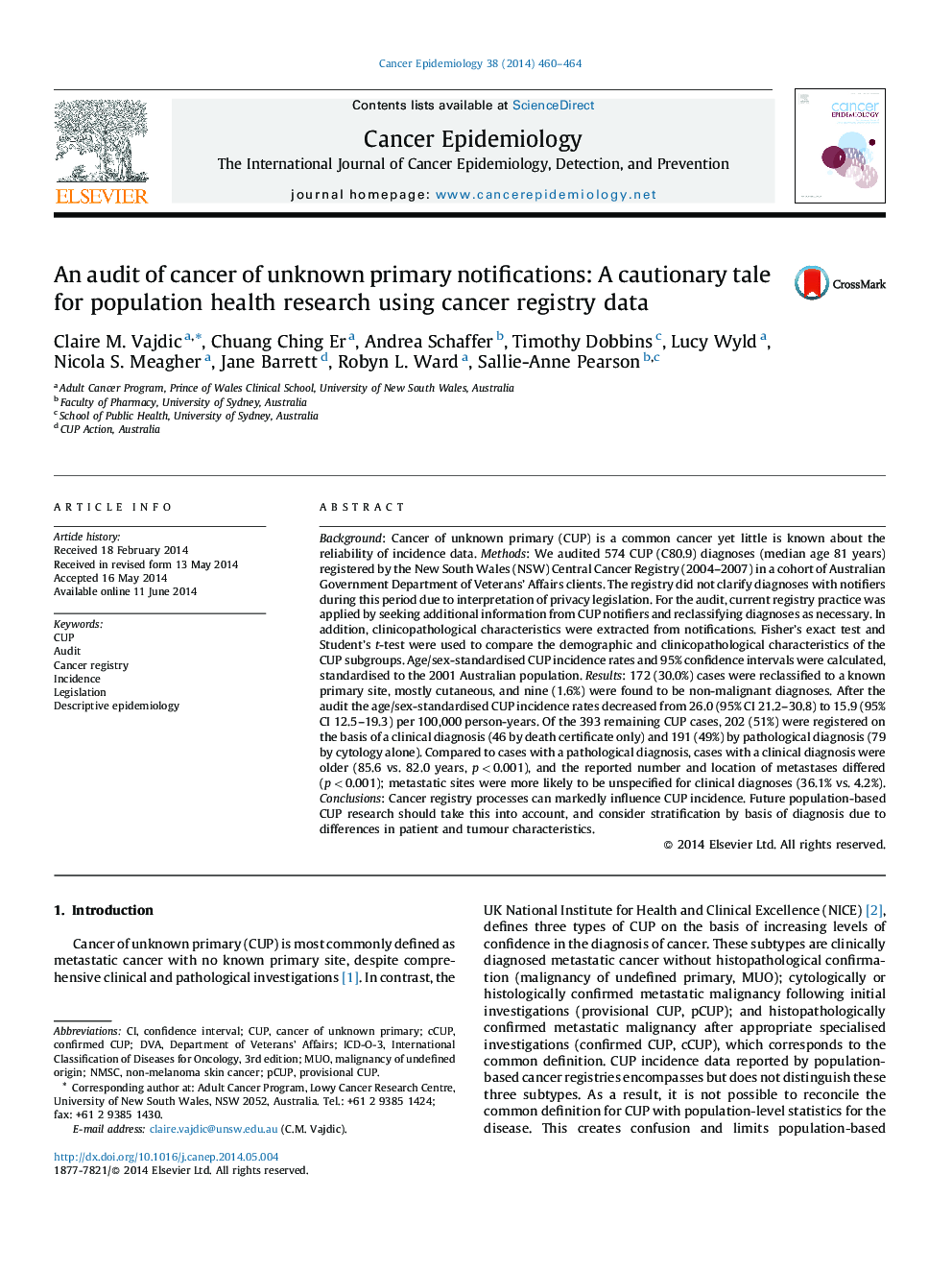| Article ID | Journal | Published Year | Pages | File Type |
|---|---|---|---|---|
| 2109505 | Cancer Epidemiology | 2014 | 5 Pages |
•30% of CUP cases registered by a population-based cancer registry were reclassified.•Cancer registration practices can have a significant impact on CUP incidence.•CUP patient and tumour characteristics can vary by the basis of diagnosis.•These findings highlight some of the challenges of population-level CUP research.
Background: Cancer of unknown primary (CUP) is a common cancer yet little is known about the reliability of incidence data. Methods: We audited 574 CUP (C80.9) diagnoses (median age 81 years) registered by the New South Wales (NSW) Central Cancer Registry (2004–2007) in a cohort of Australian Government Department of Veterans’ Affairs clients. The registry did not clarify diagnoses with notifiers during this period due to interpretation of privacy legislation. For the audit, current registry practice was applied by seeking additional information from CUP notifiers and reclassifying diagnoses as necessary. In addition, clinicopathological characteristics were extracted from notifications. Fisher's exact test and Student's t-test were used to compare the demographic and clinicopathological characteristics of the CUP subgroups. Age/sex-standardised CUP incidence rates and 95% confidence intervals were calculated, standardised to the 2001 Australian population. Results: 172 (30.0%) cases were reclassified to a known primary site, mostly cutaneous, and nine (1.6%) were found to be non-malignant diagnoses. After the audit the age/sex-standardised CUP incidence rates decreased from 26.0 (95% CI 21.2–30.8) to 15.9 (95% CI 12.5–19.3) per 100,000 person-years. Of the 393 remaining CUP cases, 202 (51%) were registered on the basis of a clinical diagnosis (46 by death certificate only) and 191 (49%) by pathological diagnosis (79 by cytology alone). Compared to cases with a pathological diagnosis, cases with a clinical diagnosis were older (85.6 vs. 82.0 years, p < 0.001), and the reported number and location of metastases differed (p < 0.001); metastatic sites were more likely to be unspecified for clinical diagnoses (36.1% vs. 4.2%). Conclusions: Cancer registry processes can markedly influence CUP incidence. Future population-based CUP research should take this into account, and consider stratification by basis of diagnosis due to differences in patient and tumour characteristics.
